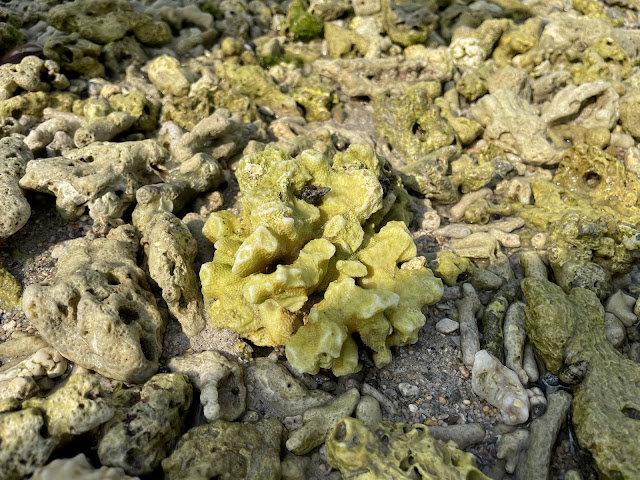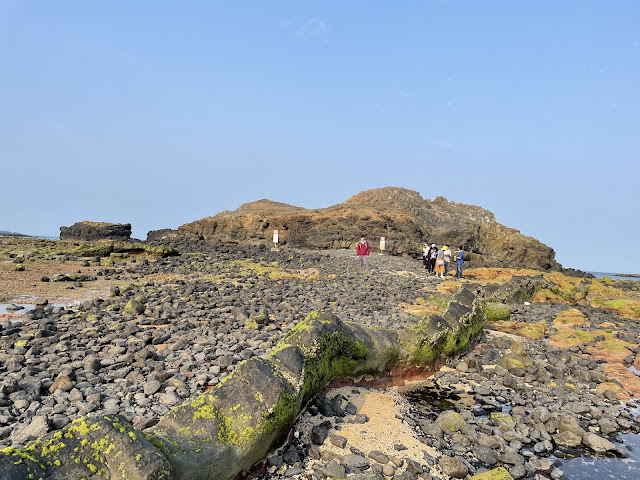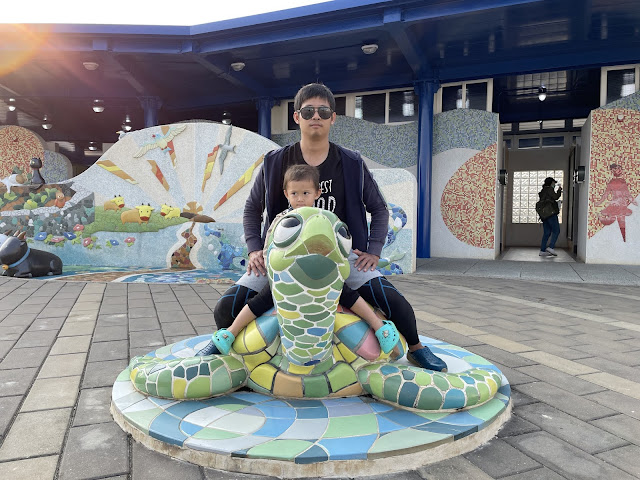Travel Date: 27/03/2021-01/04/2021
It's our first time visiting Penghu, and I'll describe the process, prices, our accommodation, and the places we visited in separate posts as I have a lot planned.
We started by visiting the historical Ash Kilns and the famous attraction known as "Moses Parted the Sea," where we witnessed the low tide creating a pathway to a nearby small island. We also explored Nanliao Village, renowned for its traditional fishing settlement, with many interesting buildings to see.
In addition to the main island, we ventured to the smaller islands connected by sea-crossing bridge. On Yuwengdao Island in Xiyu Township, the furthest island, we visited the Yuwengdao Lighthouse, the Sanxian Pagodas with their breathtaking views of the sea, and observed the fake cannon. We also enjoyed the natural beauty of Daguoye Columnar Basalt, Niuxin Mountain and Paradise Road. In Xiyu, there are several forts worth exploring, such as the Western Fort, Eastern Fort, and the Five-hole bunker.
Zhuwan Temple left me with mixed feelings as I enjoyed seeing the turtles but felt sorry for them living in captivity underground.
Chen Erkan Historical House, along with the entire village of unique old buildings, is a famous place to visit in Penghu.
Going south on Magong Island, we explored the remains of a Dutch castle (actually a memorial), as well as the South and North Pagodas, which have unique and intriguing designs, though their exact story remains unknown.
Magong City is also filled with historical architecture. We explored Zhongyang Old Street, old wells, Mazu Temple, and the sole remaining city gate.
We discovered a place in Penghu where you can interact with starfish and sea urchins, which was particularly interesting for kids as they could learn more about the underwater world.
Another fort we visited, Jinguitou Fort, was once used to defend the island of Penghu.
For those interested in temples and religions, the Confucius Temple is worth a visit.
In just four days, we experienced an incredible amount. Penghu is truly beautiful, and I hope to revisit someday in the future.
After arriving in Penghu, we started visiting some places. Due to only having half a day, we drove to Huxi Township on the east coast of Penghu.
Located in the northeast corner of Penghu, the early Nanliao and Beiliao were collectively known as the Guibi Port Society. After establishing their own villages, Beiliao relied on the coast to develop fisheries, while Nanliao relied on the inland to develop agriculture.
Baikeng Ash Kiln (白坑灰窯遺跡)
The ash kiln industry in Penghu is said to have been initiated by Xu He, a native of Gangzaiwei (now Xujiacun) in Huxi Township. He introduced the lime-burning method from Taiwan before the Japanese Occupation, and Jiacun became the first ash kiln industry in Penghu. Later, Qingluo Village, Hongluo Village, and Baikeng Village also established ash kiln factories, with Qingluo Village having the largest ash kiln factory. Eventually, even Magong started operating ash kilns.
Baikeng Village, known for its abundant raw materials such as coral reef limestone fragments and shell fragments, became a hub for ash kilns. At its peak, there were 16 ash kilns in the area, making it an important town in the ash kiln industry. The production process involved mixing coral reef limestone fragments, shells, and coal at a ratio of approximately 3:1, firing them in the kiln, and then going through the steps of ignition, leaving the kiln, sieving ash, and packaging. The larger kilns could burn up to 145,000 catties* of lime at a time.
Huxi Township was already selling lime to the west coast of Taiwan's main island during that time. The number of ash kilns in Penghu gradually increased, reaching 26 or 27 during the Japanese occupation and the early postwar period. By 1956, the highest number reached 41.
*Catty (Taiwanese kilogram) 1斤 = 0.6kg
However, with the lime market shrinking and the costs of lime burning increasing, coupled with protests from residents due to the smoke emitted during the burning process, the industry's willingness to operate declined, leading to its gradual withdrawal from the market. After 1973, only three ash kilns remained, and the lime kiln industry became a fading industry. In the 1990s, only Mr. Xu Shiliu and Mr. Cai Wanyi from Baikeng Village managed their lime kilns, both located in Yanziwei. After 1997, Xu Shiliu was barely able to sustain his business, but it was partially closed. Currently, there are no traditional ash kilns in operation. Only the remnants of the ash kilns in Guoye Village and Baikeng Village remain. The Guoye ash kiln, known as the "Ancient Castle," is the most spectacular ash kiln building in Penghu.
Although the Baikeng ash kiln was built in 1960, the ash it produced was an important construction material in Penghu at that time. Its existence represents the production process and methods of Penghu's oyster shell ash and stone ash. The kiln is still in good condition, and it is one of the few remaining industrial buildings in Penghu that holds significant historical and cultural value. Therefore, it is recommended to register it as a "historical building."
See also: Nanliao Village
Baikeng Beach (白坑沙灘)
Next to the kiln, there is Baikeng Beach, which is a nice beach with plenty of green algae growing on the shore. We saw many hermit crabs and found some beautiful shells there.
Moses divided the sea (奎壁山摩西分海)
We also visited the site called "Moses Divided the Sea". The first time we went during low tide, the road to the island was quite wide, but it wasn't as beautiful as we had seen in pictures. Luckily, we visited another day when the tide was low, and the trail appeared. It was a really nice view.
The other day view:
Guoye Ash Kiln (菓葉灰窯)
Another ash kiln we visited was the Guoye Ash Kiln located on the southeast seashore of Guoye Village, Huxi Township. It was constructed in 1960 by a local villager named Chen Fuxi. The kiln's shape is quite remarkable, resembling a "castle" when viewed from a distance, which has consistently attracted the attention of tourists. Over time, the kiln may have undergone multiple additions and renovations, resulting in its present style. When initially built in 1960, basalt and mortar were used for the walls since cement was not widely used. However, as time went on, the walls were reconstructed using hollow cement bricks and reinforced concrete for the floors and roofs.
The owner of the kiln has made several improvements to its hardware facilities. It is equipped with a diesel blower to reduce the kiln's operational time and overcome the challenge of halting the burning process during periods of low summer winds. Additionally, a diesel engine-driven sieve is utilized for ash screening, greatly enhancing the working environment for workers involved in the lime sifting process. Unfortunately, the prosperity of the ash kiln industry in Penghu was short-lived. Faced with intense competition from cement, ash kiln production in the county declined significantly by around 1970 due to a sharp decrease in sales.
The Guoye Ash Kiln complex consists of two groups of buildings, one on the east and the other on the west. In addition to the large and small kilns, the buildings on the east side include several ash rooms for lime screening and stack rooms for storage. The complex also features auxiliary structures such as stack rooms, toilets, and water towers. The kiln on the east side, along with its supporting facilities, is built in accordance with the natural terrain. The walls of the ash and stack rooms at the bottom are predominantly constructed with stones, while some sections incorporate hollow bricks. The top cover is made of reinforced concrete to create an open-air working platform. Positioned at a higher elevation than the ash room, the work platform is primarily constructed with rocks and includes steps for workers to access the area for pouring sandstone. Additionally, there is a space for coal mixing between the two kilns, a storage tank adjacent to the kiln, and an "ash yard" located in front of the kiln.





































0 komentarze:
Post a Comment